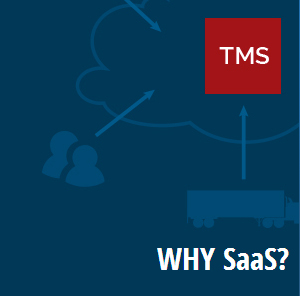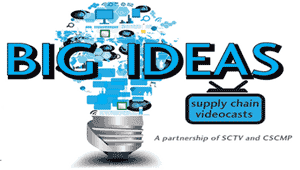 |
June 12, 2014 - Supply Chain Flagship Newsletter |
 |
| THIS WEEK'S SPONSOR: GENPACT |
 |
|
 |
|
||||||||||||||||||||||||||||||||||||||||||||||||||||||||||||||||||||||||||||||||||||||
A 360-Degree View of e-Fulfillment Part 3
|
|||||||||||||||||||||||||||||||||||||||||||||||||||||||||||||||||||||||||||||||||||||||
| GILMORE SAYS: |
"Begin now and stay close to your total and omni-channel order profiles, key to optimizing operations." WHAT DO YOU SAY? |
e-commerce/e-fulfillment are obviously where the action is in retail and by extension consumer goods, but affecting virtually every other type of business in the end. Grainger, for example, finds manufacturing managers are now placing their orders on-line mid-afternoon, after the first shift is over - not much before Grainger's cutoff for next day delivery, causing big picking and shipping challenges.
Despite rapid growth, making any money in e-channels has proven very difficult for almost all e-tailers. The e-commerce division of one major retailer is losing about 15% on sales, a third-partly logistics executive in the know told me last year.
Amazon is a giant threat to almost everyone, with revenues still rising 20+% quarter over quarter, entering new markets (Amazon Fresh, Amazon Supply), innovating all over, locking up the Kiva robots for order picking, co-locating mini-fulfillment centers with large suppliers like Procter & Gamble (infuriating other retailers and some CPG companies), a patent for "anticipatory shipping," etc. Consider the hardball Amazon is now playing with some book publishers over prices and margins, and extend that to other categories it may dominate.
Logistics costs are vexing. A consumer goods company has to ship goods to an e-tail DC, only to have that maybe shipped right back to a consumer in the area. Vendor drop shipping is one solution - but really only works if the customer orders a single line item. In effect, brick and mortar retailers are outsourcing the final delivery to the customer who comes into a store, but e-tailers have to provide it to on-line customers.
We will see many new "points of interaction," such as the (very cool) virtual reality stores Tesco has created in some Tokyo subway locations, where customers place orders in downtown stations, and then pick them up when they get off the subway near their homes. Obviously we have or will have mobile, television ordering, kiosks and more.
Inventory management across channels remains a major issue. As noted in part 2, the best vision for this I ever heard was in about the year 2000, from a manager at LL Bean, as depicted in the graphic below. But I don't believe anyone is yet doing something like this.
All this is going to change the face of retail - the end result of which is we probably will have far too many retail stores/square footage. As that retail store shrinkage takes place, retailers and manufacturers may need to redesign their distribution networks to better optimize across a different brick and mortar footprint.
Ok, some new stuff now.
Many retailers (Macy's, Walmart, several grocery store chains) are piloting and/or rolling out store-based e-fulfillment. This, they hope, is the antidote to Amazon's fulfillment center-based strategy, which of late has involved building DCs close to major metro markets, rather than in more rural, less expensive locations as it did in the past (see Supply Chain Graphic of the Week: Changing Network Strategy at Amazon). In fact, Amazon is said to be planning to deliver customer orders directly, in its own trucks, often with same day service, in the top 40 metro markets in the US.
Brick and mortar retailers believe (hope?) they can use their physical stores to provide even faster service without building expensive new fulfillment centers, or reconfiguring existing DC operations to support multi-channel.
But to do that takes many changes and enhancements. Macy's is building mini-DCs in the back of its stores. It rightly sees its roll-out of item-level RFID as key to its plans. While the initial justification was not really e-commerce related, Macy's now sees that store-based fulfillment, order on-line/pick up in store, etc. are hugely dependent on very high levels of inventory accuracy, something few retail stores have today.
One question for store-based fulfillment is whether you do have a separate area for the work (maybe for fast movers), or just pick out of store stock on the shelves. But of course, either way you want to be efficient, and have control, so something like a Warehouse Management System is needed (e.g., pick path optimization - funny but true.) But it's a "Lite" WMS version for sure, and with some differences - for example, you probably need to provide an image of the ordered item to the picker on a device, and be able to deal with variable weight/price products (meat, produce).
Another hope for brick and mortar stores is the so-called "click and collect" concept, already being used in parts of Europe, and being tested by Walmart in the UK and Denver. Under this model, orders are placed on-line, and then either the customer uses say a drive-through initially set up for prescription orders, or temperature controlled "lockers" (for grocery at least) inside the store to pick-up their items.
In Germany, these collecting locations are often connected to actual retail DCs - you drive up, give someone an order number, and they put the groceries in your car. Tesco and others in the UK are setting up such lockers in urban areas with say lots of condominiums nearby, or the parking lots connected to London's "Tube." Wow.
I have a lot more to say, but here were my final thoughts at the presentation:
1. Everyone should understand you will likely lose money in omni-channel for some time, but must proceed regardless to protect your market position.
2. Begin now and stay close to your total and omni-channel order profiles, key to optimizing operations. Always a smart idea, it is essential for omni-channel cost minimization.
3. Map your planned points of interaction (POIs) to you points of fulfillment (POFs) to clearly understand what you need to support. Macy's did this several years ago, and found 16 combinations that it wanted to empower. There were actually a few more, but it decided it could find workarounds for those rare combinations, while process and technology enabling the others.
4. Be a fast follower - keep close to what others are doing, but you don't necessarily want to be a pioneer. Nor a laggard.
5. Develop explicit strategies/policies with regard to inventory management: This needs to be an executive level decision, in all the messy detail. Too many companies are just sort of defaulting to how inventory will be handled across channels.
6. Take advantage of DC investments that can drive big fulfillment savings: labor management, Voice, slotting (sometimes) and obviously automation, though be careful on the latter as things are changing so rapidly.
7. Invest in Distributed Order Management (DOM): Almost a necessity for anyone with multiple fulfillment points, or that wants to leverage vendor drop shipments.
8. Invest in Parcel Shipping Management technology: Seems silly to me to be in e-fulfillment without strong technology to optimize parcel shipping costs.
There's more, but I am out of space. That's it for this series, but hardly the last from us on omni-channel and e-fuflillment.
Any comments/reaction to Gilmore's latest toughts on e-commerce and e-fulfillment? Let us know your thoughts at the Feedback section below.
![]()
| View Web/Printable Version of this Column |
|
|
|
YOUR FEEDBACK
We received a a scattering of feedback from our "trip reports" from various conference over the past few weeks. You will find some of the comments stemming from those summaries below/
Feedback on the Supply Chain Talent Crisis (Gartner Summary):
We've got to get out if denial and into proactive, sustainable, long-term solutions. Art van Bodegraven
|
||
| On the Bullwhip Effect (JDA Summary): | ||
Regarding the Bullwhip effect I invariably test it out on my training courses and the syndrome is alive and kicking 50+ years on! May I suggest one reason for its longevity. The right people in the customer/supplier are just not talking to the right people in the supplier/customer. If you are a customer who is having problems with order fulfilment then the short term action is naturally to increase the order and the cycle is started. Too often the customer does not know who to talk to so a difference can be made. Change requires closer integration of strategic, tactical and operational activities and that is rarely easy, particularly in the supply chain where "steady state" is an environment achieved only momentarily, and then so fleetingly that it is invariably too late to take advantage of. Sorry about the pessimism but at least we are talking about the issue and spreading awareness can only help to diminish the problems caused by failure to identify true demand. |
||
On a Hierarchy of Supply Chain Metrics (Gartner Summary): |
||
Gartner is right: "Forecast Accuracy" should be the pre-eminent supply chain measure and here is the reason why.
Consumer spending represents two thirds of the economy and 75% of this spending is done in the Consumer Packaged Goods Industry. Forecasting accurately what consumers will buy in a given store has more overall impact on manufacturing & logistics costs than anything else I can think of. It effects everything we do up and down the entire retail supply chain. Andre' Martin |
||
| On SCDigest Conference Coverage: | ||
I have often wondered why others don't really do what you do with these conference: smart, succinct summaries and insight, usually just a day or two after the event ends. I have simply come to the conclusion that it is just that no one else can really do what you do. Congratulations. Please keep up the good work, it is very helpful. Dwayne Koch |
||
SUPPLY CHAIN TRIVIA ANSWER
Q: Which US public freight carriers have consistently been the most profitable in recent years, as measured by net income as a percent of sales, in each of truckload, LTL and rail modes?
A: Truckload: Heartland Express; LTL: Old Dominion; Rail: Union Pacific.
| © SupplyChainDigest™ 2003-2013. All Rights Reserved. SupplyChainDigest PO Box 714 Springboro, Ohio 45066 |
POWERED BY: XDIMENSION
|









